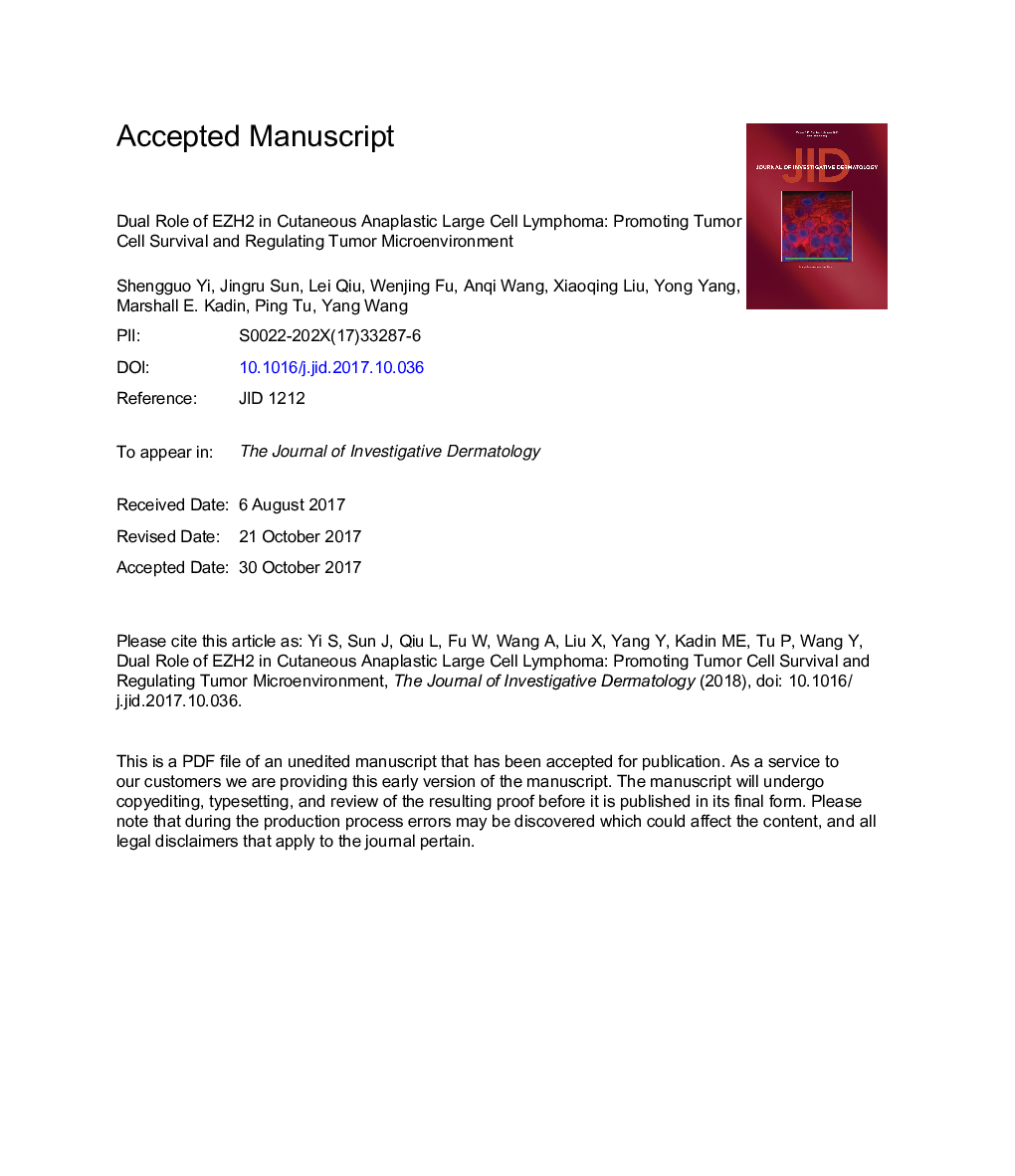| Article ID | Journal | Published Year | Pages | File Type |
|---|---|---|---|---|
| 8715938 | Journal of Investigative Dermatology | 2018 | 38 Pages |
Abstract
Primary cutaneous anaplastic T-cell lymphoma, characterized by the CD30+ anaplastic large T cells, comprises the second most common group of cutaneous T-cell lymphoma. Little is known about the mechanisms of disease progression. Here we report that enhancer of zeste homolog 2 (EZH2), the catalytic subunit of polycomb repressive complex 2 that mediates histone H3 lysine 27 trimethylation, is overexpressed in CD30+ anaplastic cells in primary cutaneous anaplastic T-cell lymphoma and large-cell transformed cutaneous T-cell lymphoma. Silencing EZH2 or inhibiting its histone methyltransferase activity conferred increased apoptosis and G1 cell-cycle arrest in primary cutaneous anaplastic T-cell lymphoma cells in vitro and a xenograft model in vivo. This was mediated by the de-repression of thioredoxin-interacting protein, a major redox control molecule, and consequent formation of reactive oxygen species. Silencing thioredoxin-interacting protein abrogated reactive oxygen species accumulation in EZH2 suppressed cells and rescued cell growth disadvantage. Moreover, EZH2 suppression de-repressed C-X-C motif chemokine ligand 10 and facilitated the recruitment of effector CD4+ and CD8+ T cells into the tumor microenvironment via a C-X-C motif chemokine ligand 10/receptor 3 interaction. These results demonstrate a dual role for polycomb repressive complex 2-mediated epigenetic silencing in tumor progression and antitumor immunity in primary cutaneous anaplastic T-cell lymphoma, and provide a rationale for the pharmacologic inhibition of EZH2 activity in large-cell transformed cutaneous T-cell lymphoma.
Keywords
Related Topics
Health Sciences
Medicine and Dentistry
Dermatology
Authors
Shengguo Yi, Jingru Sun, Lei Qiu, Wenjing Fu, Anqi Wang, Xiaoqing Liu, Yong Yang, Marshall E. Kadin, Ping Tu, Yang Wang,
